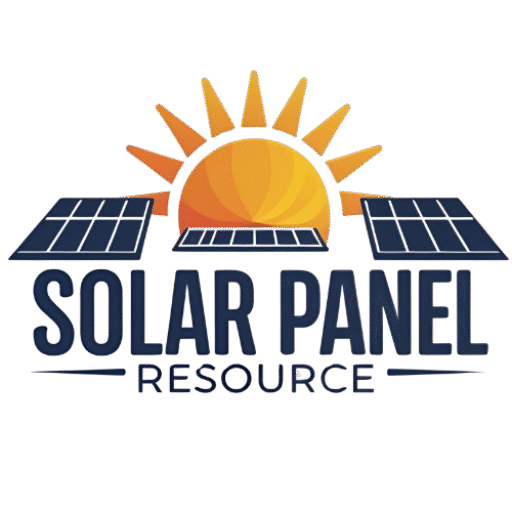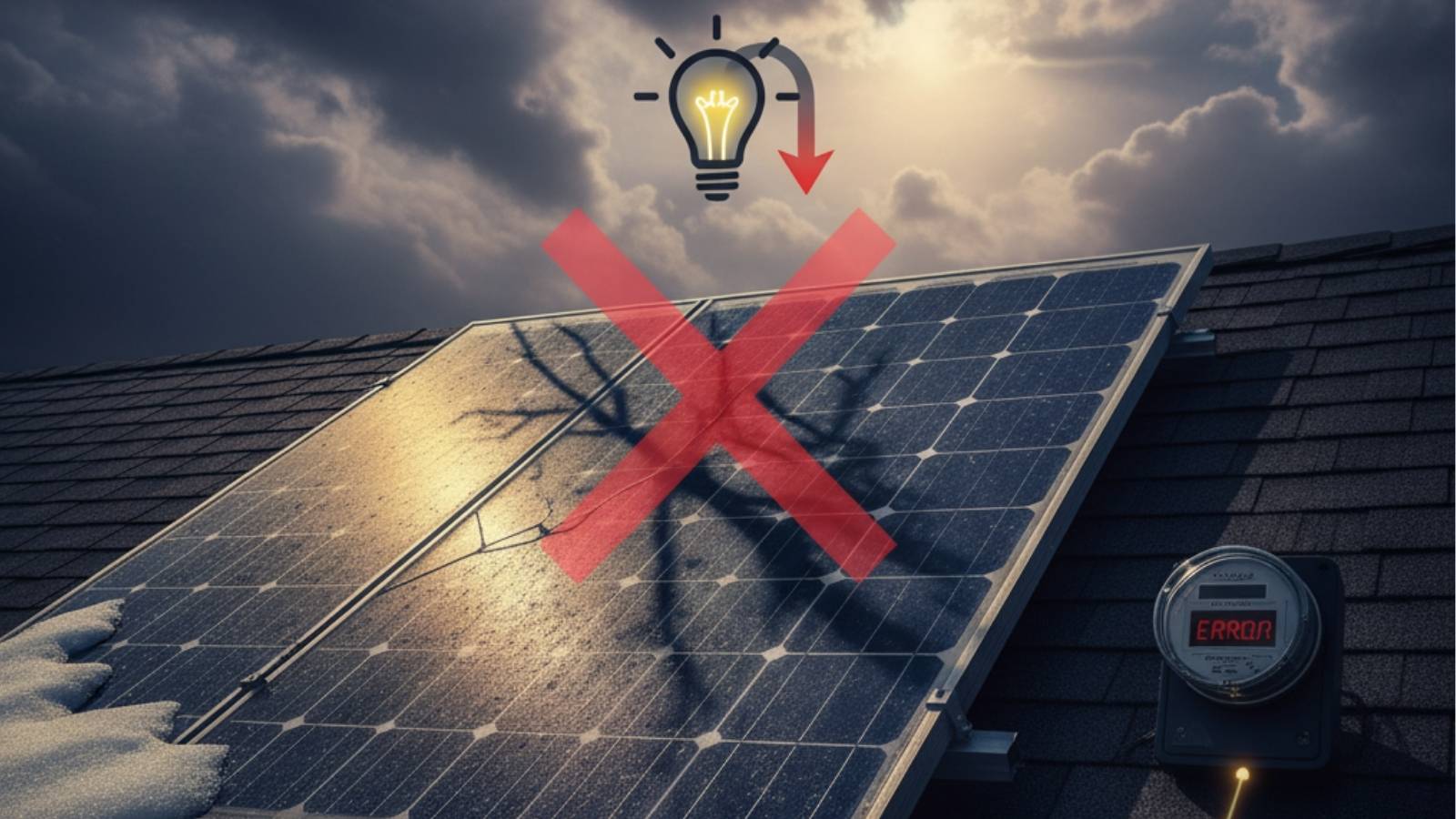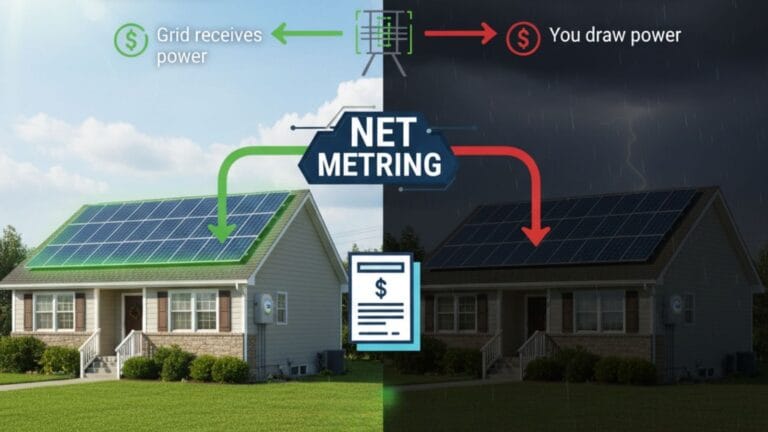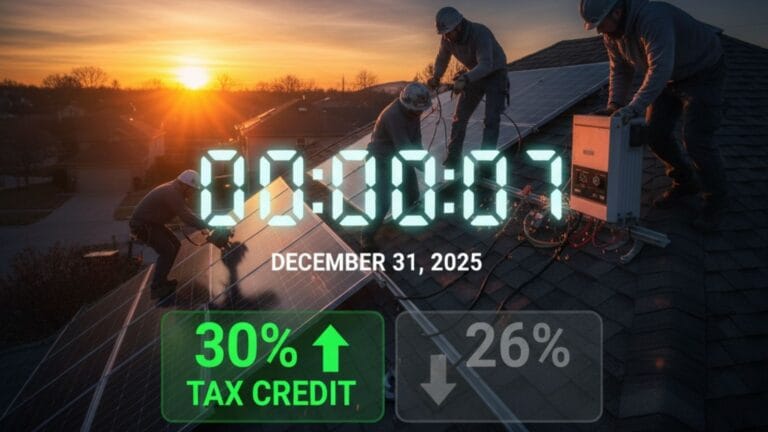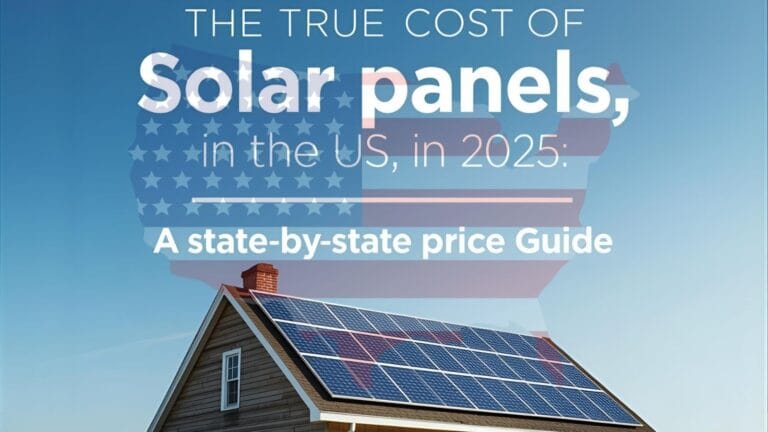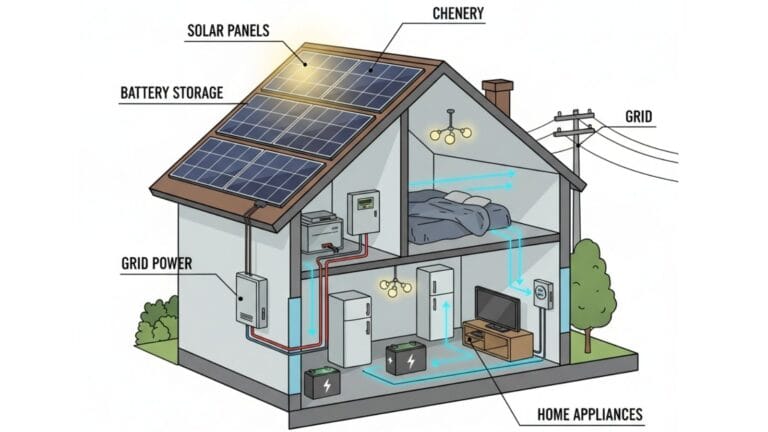Why Is My Solar Panel Not Producing Enough Power? 7 Common Reasons
I still remember the day we installed our first set of solar panels on the roof. The whole family was in the yard, eyes glued to the installers as if they were setting up a spaceship. We were excited, already dreaming of zero electricity bills and endless clean energy. But a few months later, I noticed something strange: my solar panel was not producing enough power.
If you’ve ever felt that same frustration, you’re not alone. I’ve spoken to countless homeowners and business owners who have experienced the exact same issue. In my experience as a solar energy consultant, I’ve seen a variety of reasons why a system may not be living up to its potential.
Let me walk you through seven common reasons this happens—and what you can do about it—based on my own experience and the stories I’ve heard from others around the world. We will look at everything from simple fixes to more complex technical issues, giving you a clear path to get your system back to peak performance.
1. Shading From Trees or Buildings

One sunny afternoon, I was sipping coffee on the porch when I noticed a new shadow creeping over our panels. Our neighbor’s tree had grown taller than we expected, and its branches were blocking a good chunk of sunlight. Even a small shadow can cause a surprising drop in output. It’s like trying to charge your phone with the cable half-plugged in—it works, but painfully slow. The energy production on that specific panel plummeted, and because of how our old system was wired, it dragged down the output of the entire row.
This is an incredibly common problem. I once consulted with a client in Sydney who had to trim his backyard trees every spring just to keep his solar panels performing at their best. If you live in a city, a new building next door can have the exact same effect. The key is to be proactive. Check your panels around different times of the day—morning, noon, and late afternoon—to spot any unexpected shade.
For more details on how shading impacts your solar production, the National Renewable Energy Laboratory (NREL) has excellent resources and studies on system-level performance.
2. Dirt, Dust, or Bird Droppings
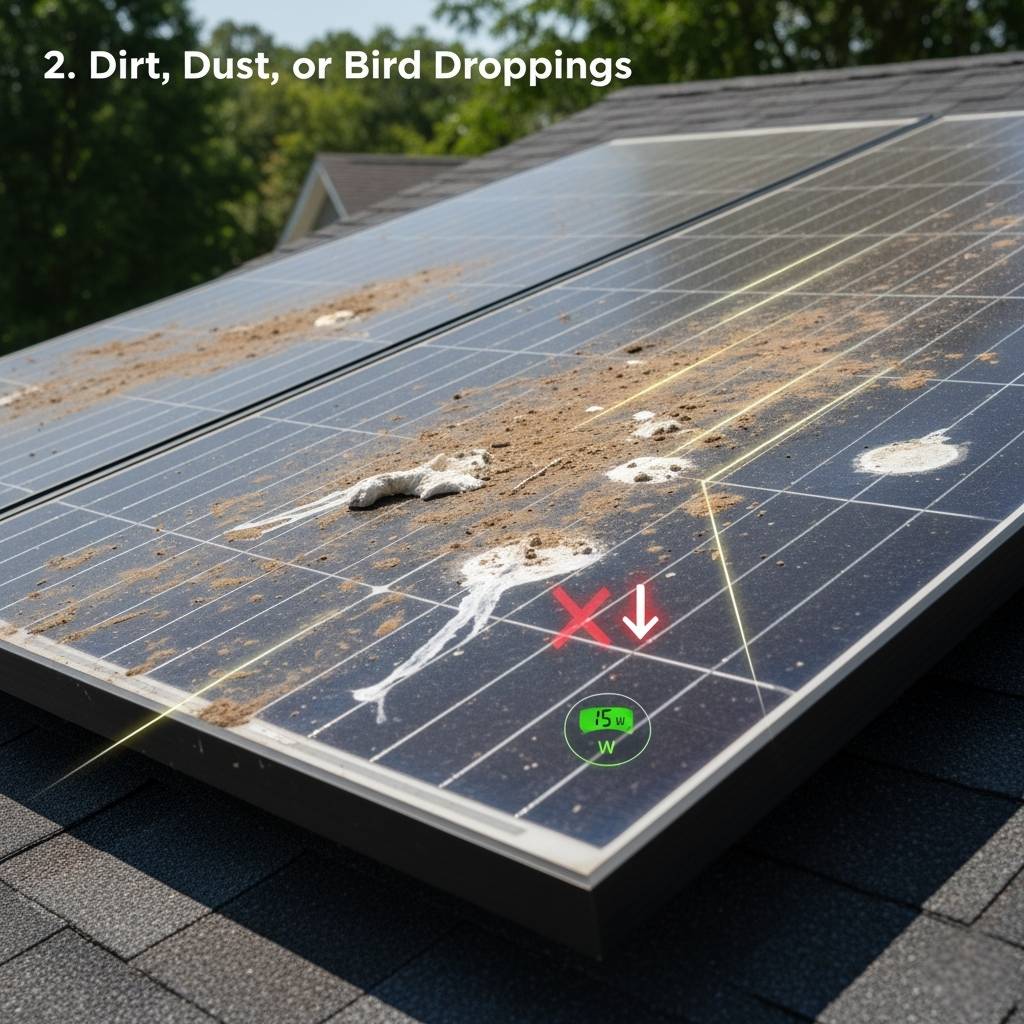
I know it sounds obvious, but you’d be amazed at how much power you can lose when your panels are dirty. In our case, just a few months of autumn leaves and a couple of well-aimed bird droppings reduced our output by nearly 15%. I only found out when I climbed up there to clean the gutters and saw the mess. The output chart on my monitoring app finally made sense—it showed a slow, steady decline that I had ignored.
This is an incredibly common problem. Panels in rural areas or near farms often collect a fine layer of dust that can be hard to see from the ground. A friend in a small village in Spain told me his panels looked like they had been through a sandstorm after a particularly dry summer. A simple wash with a garden hose (and a soft brush if needed) can make your system feel brand new and immediately restore lost power. Don’t underestimate the power of a clean surface!
3. Faulty Wiring or Loose Connections
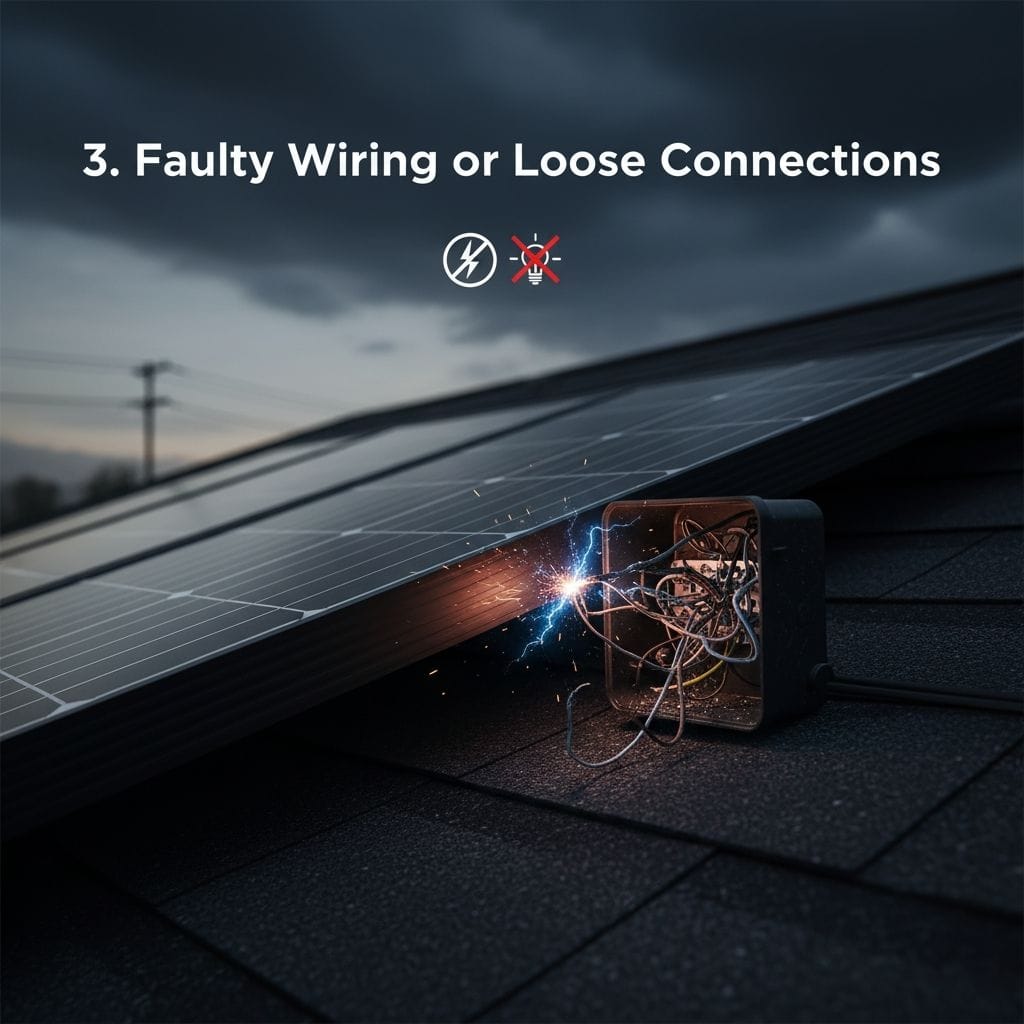
This one is trickier because you can’t always see the problem. Sometimes a loose connector or a damaged cable reduces the current flowing through your system, silently choking its performance. I once helped my uncle with his small bakery; he’d switched to solar to cut costs, but the oven kept drawing more power from the grid than expected. After some troubleshooting, we discovered a loose MC4 connector was the culprit. The poor connection was creating resistance and causing a significant loss of energy.
If you suspect this is happening, it’s not a DIY fix. You need to get a qualified technician to inspect your system. Electrical connections can degrade over time, especially in areas with extreme temperatures or salty air near the coast. They can find and fix these issues safely, ensuring your system operates efficiently and, most importantly, safely.
4. Inverter Issues
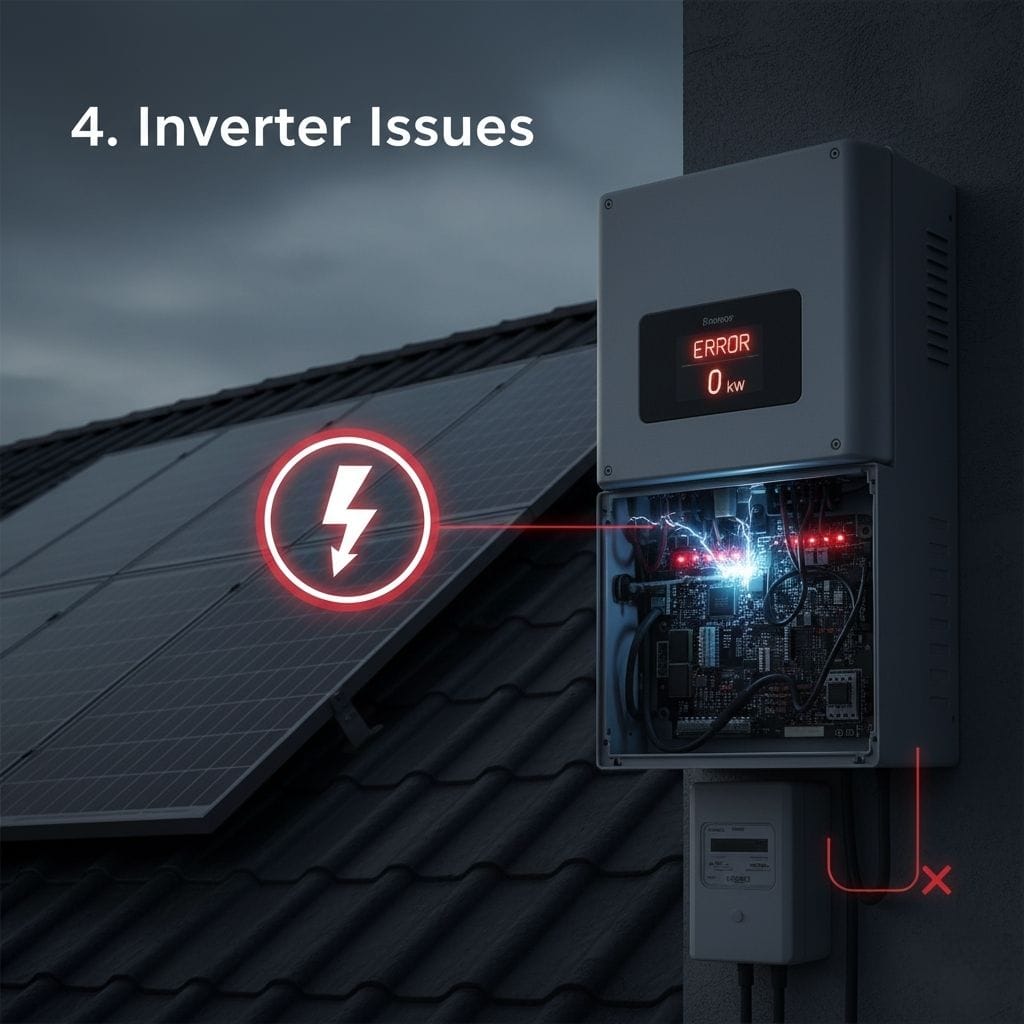
Your solar panels produce direct current (DC) electricity, but your home runs on alternating current (AC). That’s where the inverter steps in—it’s the critical component that converts the power your panels generate into usable electricity. When our own inverter failed one morning, I remember standing in the garage staring at the blinking red light, feeling like I was looking at a broken spaceship console. Without a working inverter, your panels could be producing a perfect amount of power that never reaches your home or the grid.
This is a problem that requires a technician, but you can spot it early. Modern inverters often have a monitoring app that sends you alerts if something is wrong. Make a habit of checking your app regularly. If you see unexpected, dramatic drops in production or strange error codes, it’s a strong signal that your inverter needs professional attention. Don’t ignore these alerts; they are often the first sign of a failure that can halt your system’s production entirely.
5. Weather Conditions and Seasonal Changes
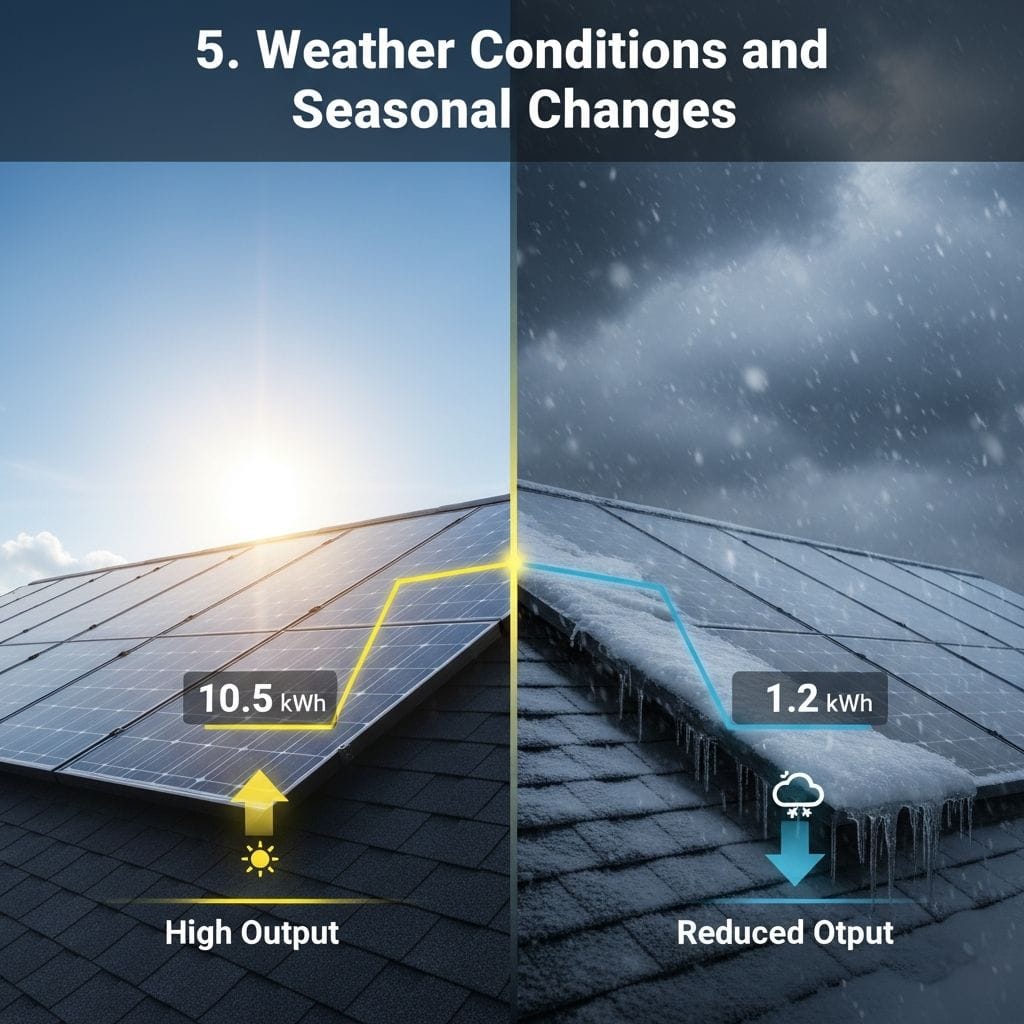
Not every day is a perfect sunny day, and that’s completely normal. I remember when we had a week of heavy, persistent clouds last winter; our daily production dipped by half, which was a bit alarming at first. Panels still work on cloudy days—they are great at capturing diffused light—but their efficiency drops significantly.
That’s why it’s completely normal to see big seasonal changes in output. In places with distinct seasons, like northern Europe or Canada, shorter winter days also mean fewer peak sun hours. A system that produces 30 kWh in June might only produce 10 kWh in December. Don’t panic if your system seems a bit lazy during the darker months; it’s likely just the season. The key is to track your monthly and annual production data to see the bigger picture and understand what is a normal fluctuation versus a genuine performance issue.
6. Degradation Over Time
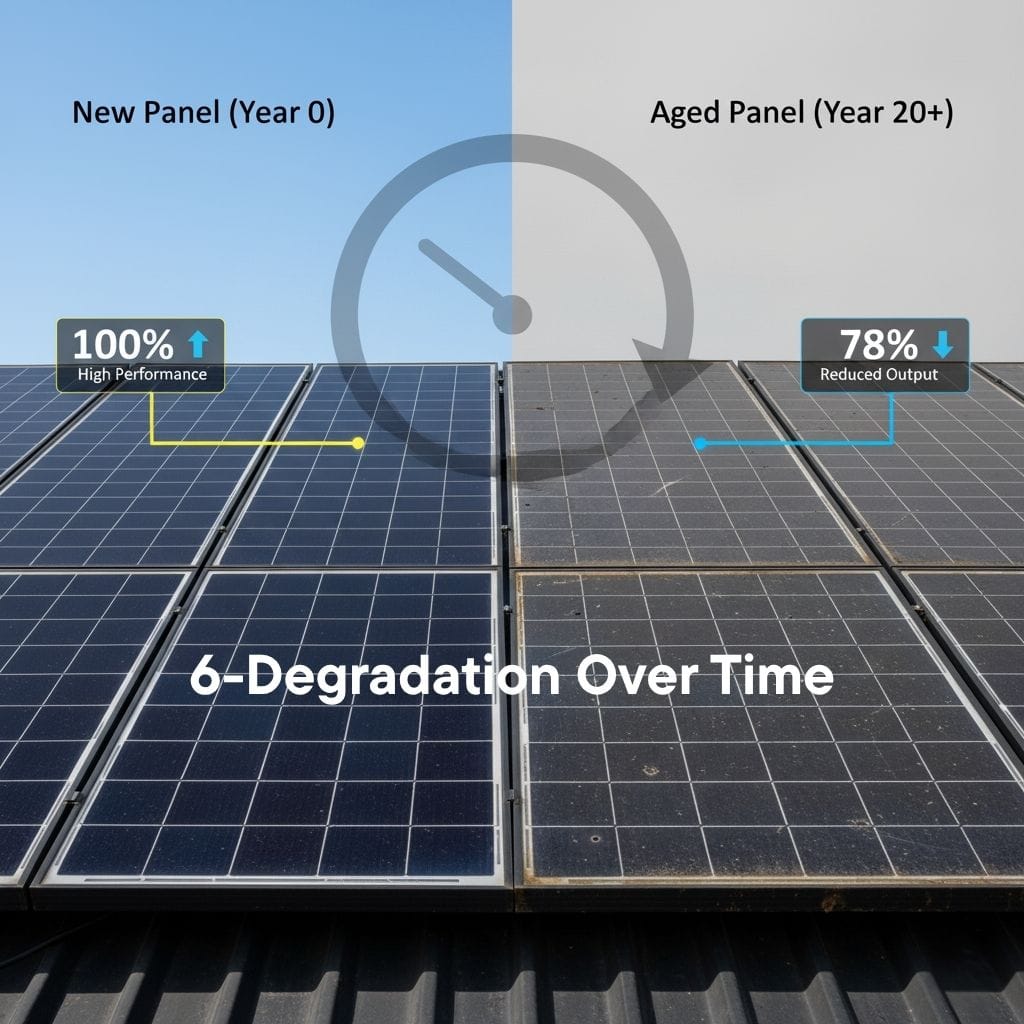
Solar panels are tough, but like all technology, they age. A normal part of this process is a gradual decline in efficiency, known as degradation. Most panels lose about 0.5% to 1% efficiency each year. That means a 10-year-old panel might be producing around 90% of what it did when it was new. I think back to our first year’s production and compare it to today, and while the difference is small, it’s definitely there. This isn’t a sign of a fault; it’s a natural part of the system’s life.
If your system is older, it’s a good idea to check your warranty. Most reputable manufacturers guarantee at least 80% efficiency after 20-25 years, which is still pretty amazing when you think about it—free, reliable power from the sun for decades! This long-term performance guarantee is a key reason why solar is such a solid investment.
To learn more about how solar panel efficiency changes over the years, I recommend exploring the International Renewable Energy Agency (IRENA) Solar PV reports for in-depth data and insights. They provide excellent long-term analysis on the performance of solar systems worldwide.
7. System Size vs. Energy Needs
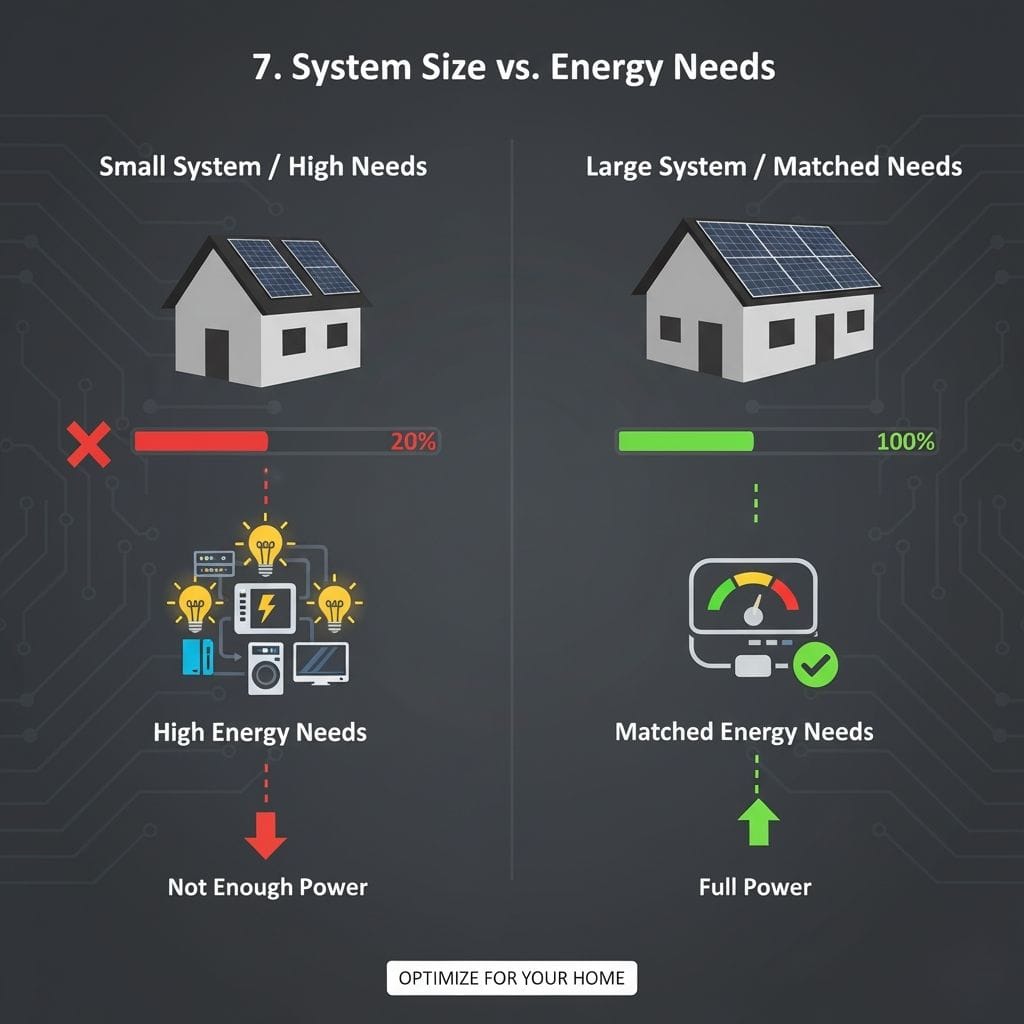
This might be the most overlooked reason for low performance. Sometimes, the issue isn’t with the system itself, but with your expectations. When we added a second freezer to our garage and started charging an electric scooter, our energy use jumped. Suddenly, our 3 kW system, which had been perfectly adequate, wasn’t enough to cover our new, higher energy needs.
It’s like buying a small coffee and wondering why it doesn’t last all day. If your lifestyle or business has grown since you installed your solar system, you might simply need to add more panels or pair your system with a battery to meet the new demand. I know a family in a remote village in Kenya who started with a tiny 1 kW setup for lights and phone charging. When they added a refrigerator and a water pump, they quickly expanded their array and never looked back. Their energy needs grew, and their system grew with them. It’s a common and very solvable problem.
Final Thoughts
When your solar panels aren’t producing enough power, it can be frustrating. You’ve made a big investment in clean energy, and you expect it to work flawlessly. But most issues—whether it’s a shady tree, a dirty surface, or a growing energy demand—are fixable. The key is not to panic, but to troubleshoot.
Start with the basics: take a walk around your property, do a visual check for obvious problems, and then look at your system’s performance data. If you’ve done the simple checks and still can’t find a solution, don’t be afraid to call in a certified expert. They have the tools and experience to diagnose more complex issues, from faulty wiring to inverter problems.
I still remember the day we switched to solar. Watching that meter spin backward felt magical. And even now, years later, I believe it was one of the best decisions we’ve ever made. The initial frustration was just a small hiccup on a long journey of clean, reliable energy. So if your panels aren’t performing as expected, don’t lose heart. With a little attention and care, you can get them shining at their full potential again. The benefits—for your wallet and the planet—are well worth the effort.
You can also check out our other blog posts for ideas.

Solar Energy Enthusiast & Renewable Energy Researcher
Vural’s journey into solar energy began four years ago, driven by frequent power outages and high electricity bills at his own home. He has since gained hands-on experience with both personal and commercial solar projects. At solarpanelresource.com, Vural shares his real-world insights and in-depth research to guide homeowners and business owners on their own path to energy independence.
